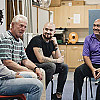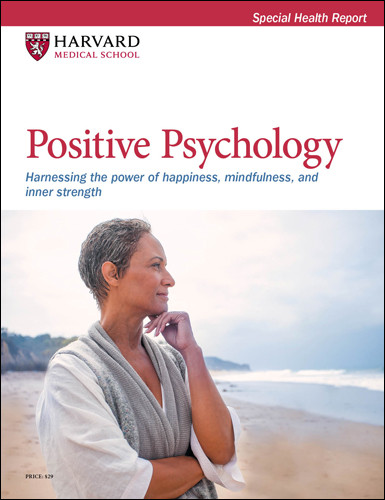The art of the heart
How artistic creativity shapes how we understand — and heal — the human heart.
- Reviewed by Christopher P. Cannon, MD, Editor in Chief, Harvard Heart Letter; Editorial Advisory Board Member, Harvard Health Publishing

For centuries, physicians and artists have explored the human heart not just as a vital organ but also as a symbol of life, love, and emotion. A review in the December 2025 American Heart Journal explains how visual art — whether in paintings, medical illustrations, or modern digital tools—has influenced our understanding of the heart and continues to play a role in cardiovascular care today.
One of the lead authors, Dr. C. Michael Gibson, is a cardiologist at Harvard-affiliated Beth Isreal Deaconess Medical Center as well as an accomplished artist. “Being an artist demands careful observation, which I think makes me a better doctor. As an interventional cardiologist, much of what I do involves looking at images,” he says.
The tradition of bridging art and science dates back to Leonardo da Vinci. His detailed sketches captured the swirling flow of blood in the aortic sinus (a small pouch just beneath the heart’s largest vessel) and mapped the crownlike pattern of the coronary arteries, laying the groundwork for modern cardiology. Later, William Harvey’s 17th-century diagrams and Henry Gray’s 19th-century Anatomy of the Human Body became foundational teaching tools.
Modern and contemporary depictions
By the 20th century, artists portrayed the heart not only anatomically but also emotionally. Frida Kahlo’s self-portrait The Two Fridas expressed heartbreak and physical suffering. Dutch painter Dick Ket, who lived with a congenital heart defect, chronicled his condition through self-portraits. Medical illustration also flourished. Frank Netter, sometimes called “the Michelangelo of medicine,” created widely used textbooks whose clarity and accuracy helped generations of doctors.
How art intersects with hearts
“The last three letters of heart are… art! Every heart carries art within it — the art of healing, hope, and humanity,” says Dr. Gibson. As the review details, the intersection of art and cardiology comprises four domains:
Symbolism. The heart as metaphor shapes how people perceive illness. For people with heart disease, images can provide emotional grounding and comfort.
Advocacy. Public health campaigns use art to raise awareness about cardiovascular disease. Community murals, photo exhibits, and digital storytelling can reduce stigma, spark empathy, and encourage prevention efforts.
Education. Anatomical drawings, three-dimensional (3D) models, and interactive digital animations help students, physicians, and patients alike understand complex cardiac structures. Artistic approaches in medical training also foster empathy and sharpen observational skills.
Innovation. Today’s technologies — 3D printing, augmented and virtual reality (VR), and art generated using artificial intelligence (AI) — are transforming both diagnostics and treatment. Immersive holograms allow surgeons to “hold” a patient’s heart virtually before operating. Personalized 3D models help patients visualize procedures like transplants or device implantation.
Healing through creativity
Engaging with art can heal as well as inform. Exposure to art that depicts the real world can lower blood pressure, while mindfulness-based art therapy reduces anxiety and depression in people with coronary artery disease. In workplaces and wellness spaces, art displays and interactive workshops may reduce stress. For people in hospitals, VR meditation and visual art interventions improve sleep and ease anxiety, both of which are important for cardiovascular health.
Looking ahead
The future may bring even deeper integration of art into cardiovascular care. AI can generate personalized images to explain a diagnosis in ways that match a person’s culture, literacy level, and preferences. Generative art may soon help researchers visualize massive data sets, track disease trends, and design tailored treatments. “AI may enhance diagnostic accuracy and streamline work flow. But creative, innovative thinking will remain a uniquely human trait, which is essential for future breakthroughs in cardiology,” says Dr. Gibson.
Heart anatomy image: © Sciepro/Getty Images; arrows: © Yelyzaveta Cherevatenko/Getty Images; Botticelli’s “Madonna of the Pomegranate” | Public Domain | Wikimedia Commons
About the Author

Julie Corliss, Executive Editor, Harvard Heart Letter
About the Reviewer

Christopher P. Cannon, MD, Editor in Chief, Harvard Heart Letter; Editorial Advisory Board Member, Harvard Health Publishing
Disclaimer:
As a service to our readers, Harvard Health Publishing provides access to our library of archived content. Please note the date of last review or update on all articles.
No content on this site, regardless of date, should ever be used as a substitute for direct medical advice from your doctor or other qualified clinician.
















